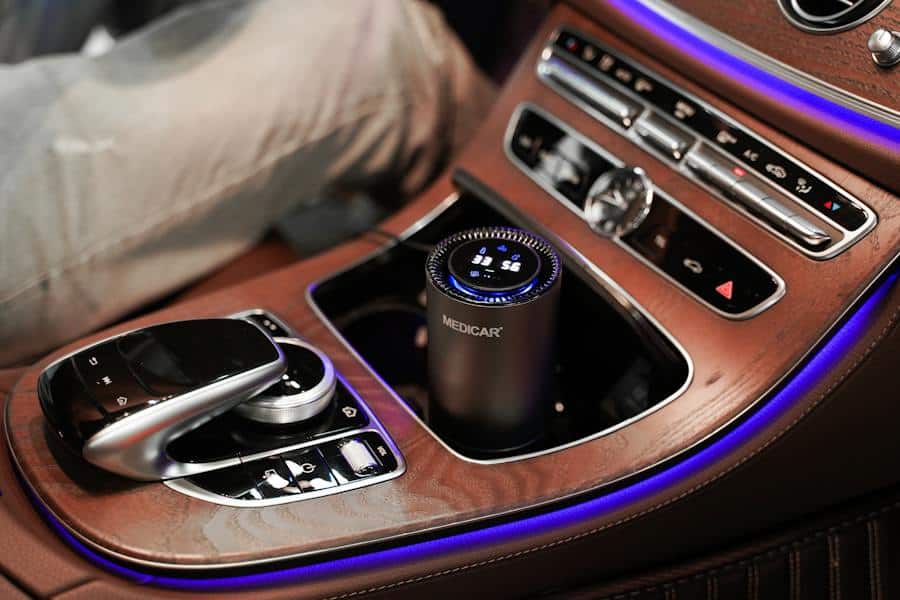The conversation around maintaining a healthy indoor environment has gained significant attention, especially with growing concerns about air quality and its impact on our well-being. Amidst this discourse, two devices often emerge: air purifiers and dehumidifiers. While both are instrumental in improving indoor air quality, they serve distinct purposes and operate on different principles. This article aims to dispel common misconceptions and provide a clear understanding of how these devices differ and, more importantly, how they contribute to creating a healthier living space whether battling allergies, mold, or simply seeking to breathe cleaner air, understanding the unique functions of air purifiers and dehumidifiers is crucial in choosing the right solution for your home.
Is An Air Purifier The Same As A Dehumidifier?
No, an air purifier is not the same as a dehumidifier. While both contribute to improving indoor air quality, they serve distinctly different functions. An air purifier is designed to filter and clean the air of pollutants, allergens, smoke, and dust. It uses filters, such as HEPA or activated carbon, to trap and remove airborne particles. On the other hand, a dehumidifier doesn’t clean the air but rather reduces humidity levels, making your environment less hospitable to mold, dust mites, and other allergens that thrive in moist conditions. In essence, an air purifier focuses on air purity, whereas a dehumidifier controls moisture levels in the air. Both can be essential for a healthier indoor environment, but they address different aspects of air quality.
The Definition And Primary Function Of An Air Purifier
An air purifier is designed to improve indoor air quality by removing contaminants in a room or a specific area. Its primary function revolves around the filtration and purification of air to create a healthier living or working environment. To delve into the details:
Filtration Process: Air purifiers typically use one or more types of filters to capture airborne particles. The most common type is the High-Efficiency Particulate Air (HEPA) filter, which can trap at least 99.97% of particles of 0.3 microns in size, including pollen, dust, mold spores, and pet dander. Some air purifiers also incorporate other filters, like pre-filters, to catch larger particles, thereby extending the life of the HEPA filter.
Additional Purification Technologies: Beyond physical filtration, some air purifiers use additional technologies to cleanse the air. These can include activated carbon filters for removing gases and odors, ultraviolet (UV) light to kill microbes, and ionizers to attract and neutralize airborne particles.
Airborne Contaminant Removal: The primary goal of an air purifier is to reduce the concentration of airborne contaminants. This function is particularly beneficial for people with allergies, asthma, or other respiratory conditions, as it can significantly decrease the presence of irritants in the air.
Enhancing Indoor Air Quality: By continuously cycling the air in a room through its filters, an air purifier can maintain a consistently higher level of air quality. This is especially important in environments with poor ventilation or high outdoor air pollution.
Versatility And Range: Air purifiers come in various sizes and capacities, tailored for different environments – from small personal units for individual rooms to larger systems that can handle entire buildings. Their effectiveness depends on factors like the size of the area, the type of filter used, and the specific pollutants present.
Definition And Primary Purpose Of A Dehumidifier
A dehumidifier is a household or industrial appliance whose primary purpose is to reduce humidity in the air. It’s specifically designed to extract excess moisture from the environment, helping to maintain a balanced and comfortable indoor atmosphere. The core functions and characteristics of a dehumidifier include:
Moisture Removal:
The dehumidifier draws moist air into its system, cooling it to remove moisture. This process condenses the moisture in the air into water, which is then collected in a tank or drained away. The dry air is then reheated to room temperature and released into the environment.
Preventing Mold And Mildew Growth:
High humidity levels can lead to mold and mildew growth, harming the health and the structural integrity of buildings. By maintaining lower humidity levels, dehumidifiers help prevent the conditions that allow these organisms to thrive.
Improving Air Quality And Comfort:
While dehumidifiers don’t filter the air, reducing moisture can indirectly improve air quality. Excessively damp air can feel uncomfortable and exacerbate specific health issues like allergies and asthma. A dehumidifier helps create a more comfortable and healthier living space.
Protection Of Property:
High humidity can damage furniture, electronics, books, and clothing. By controlling humidity, dehumidifiers help protect personal property from dampness-related damage.
Use In Various Environments:
Dehumidifiers are used in various settings, from residential homes to industrial warehouses, basements, and areas prone to dampness. Their effectiveness in these environments helps in maintaining a dry and mold-free atmosphere.
Comparing Air Purifiers And Dehumidifiers
Comparing air purifiers and dehumidifiers involves understanding their distinct roles in improving indoor air quality. Air purifiers are primarily designed to clean the air. They use filters, such as HEPA or activated carbon, to capture and remove airborne contaminants like dust, pollen, smoke, and pet dander. Their primary goal is to reduce airborne pollutants and allergens, making the air healthier and especially beneficial for those with allergies or respiratory issues.
Dehumidifiers, on the other hand, focus on reducing the humidity levels in the air. They don’t filter out pollutants but work by extracting excess moisture from the air. This process helps prevent the growth of mold, mildew, and dust mites, which thrive in humid environments. Dehumidifiers are particularly useful in damp home areas or regions with high humidity. By maintaining a balanced humidity level, dehumidifiers can also contribute to a more comfortable living environment and help preserve the integrity of the home structure and furnishings.
While both devices improve air quality, their methods and end goals differ significantly. An air purifier cleanses the air of particles and pollutants, providing direct health benefits through cleaner air. At the same time, a dehumidifier manages moisture levels, indirectly contributing to air quality by deterring allergen growth. In some cases, both devices can offer a comprehensive solution to indoor air quality issues, addressing particulate pollution and humidity-related problems.
How To Choose The Right Device For Your Needs?
Choosing the suitable device between an air purifier and a dehumidifier largely depends on your specific needs and the environmental conditions of your space. To make an informed decision, consider the following factors:
- Identify Your Primary Concern: If your main issue is poor air quality, such as dust, pollen, pet dander, or smoke, an air purifier is the right choice. It’s particularly beneficial for people with allergies, asthma, or respiratory issues. On the other hand, if you are dealing with high humidity levels, dampness, mold, or mildew problems, a dehumidifier is what you need. It’s essential in areas where excess moisture is a concern, such as basements, kitchens, or bathrooms.
- Assess Your Environment: The size of the room or space where you intend to use the device is crucial. Larger spaces may require a device with higher capacity or more power. Check the Clean Air Delivery Rate (CADR) for air purifiers to ensure it fits your room size. For dehumidifiers, consider the pint removal capacity per 24 hours and ensure it’s adequate for the area you need to dehumidify.
- Consider Climate And Seasonal Variations: A dehumidifier becomes more essential if you live in an area with high humidity levels. In contrast, an air purifier would be more beneficial in regions with dry climates but high pollution levels or allergens. Also, consider seasonal changes – for instance, a dehumidifier might be more necessary during wet seasons.
- Think About Health And Comfort: An air purifier could provide significant relief if someone in your household suffers from conditions exacerbated by air quality, such as asthma or severe allergies. Conversely, if issues like mold allergies or respiratory problems due to high humidity are a concern, a dehumidifier would be the better choice.
- Factor In Maintenance And Operational Costs: Both devices require regular maintenance, such as filter replacement for air purifiers and tank emptying or drainage for dehumidifiers. Evaluate the ease of maintenance and the cost of consumables. Also, consider the device’s energy efficiency, as this will impact your electricity bills.
- Review Additional Features: Modern devices have extra features like automatic sensors, programmable timers, different speed settings, and smart home compatibility. Assess which features align with your lifestyle and preferences for added convenience.
- Consult With Professionals: If you’re still uncertain, consulting with HVAC professionals or allergists can provide tailored advice based on your health needs and home environment.
Conclusion
While air purifiers and dehumidifiers play pivotal roles in creating a healthier indoor environment, they serve distinctly different purposes. An air purifier is essential for filtering and cleaning the air of various pollutants and allergens, making it an invaluable tool for those suffering from respiratory issues or allergies. On the other hand, a dehumidifier is vital in controlling indoor humidity levels, thereby preventing the growth of mold, mildew, and dust mites and ensuring a comfortable living space. The choice between these two devices depends on your specific needs – purifying the air of contaminants or managing moisture levels for a healthier environment.

























Leave a Reply